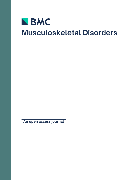
A new intervention testing the prevention of repetitive strain injuries .
This report has been verified
by one or more authors of the
original publication.
Effectiveness of a questionnaire based intervention programme on the prevalence of arm, shoulder and neck symptoms, risk factors and sick leave in computer workers: a cluster randomized controlled trial in an occupational setting
BMC Musculoskelet Disord. 2010 May 27;11:991184 Computer workers from 7 Dutch organizations partook a health questionnaire were randomized to two groups, one receiving the feedback on their scores and a preventive advice and the other group continuing with the usual care. The effectiveness of the RSI QuickScan intervention program was found to be small and limited to a decrease in some risk factors exposures only, with no difference in the prevalence of symptoms or sick leave between the groups.
Unlock the Full ACE Report
You have access to 4 more FREE articles this month.
Click below to unlock and view this ACE Reports
Unlock Now
Critical appraisals of the latest, high-impact randomized controlled trials and systematic reviews in orthopaedics
Access to OrthoEvidence podcast content, including collaborations with the Journal of Bone and Joint Surgery, interviews with internationally recognized surgeons, and roundtable discussions on orthopaedic news and topics
Subscription to The Pulse, a twice-weekly evidence-based newsletter designed to help you make better clinical decisions
Exclusive access to original content articles, including in-house systematic reviews, and articles on health research methods and hot orthopaedic topics

































































